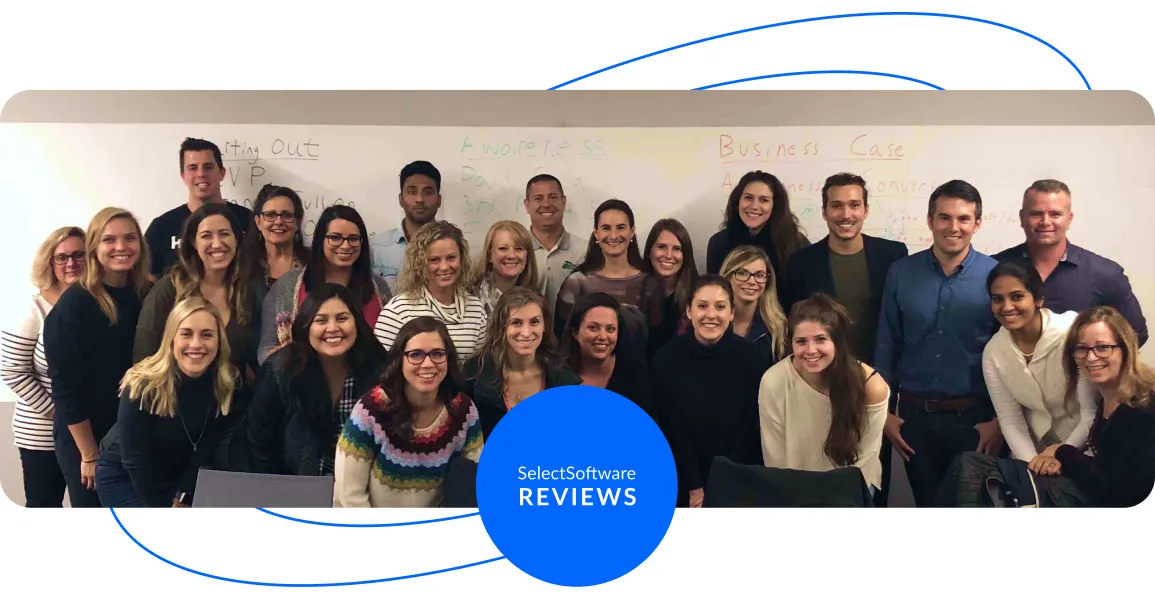Best Employee Engagement Software - 2025
Find the right employee engagement software for your business in 2025. Our reviews are grounded in hands-on experience, in-depth research, live demos, real user feedback, and insights from independent experts — so you get advice that’s consistent, reliable, and genuinely helpful.









Need Help? Talk to an HR Software Advisor!
Tell us more about your company & an HR Software Advisor will help you find the right software
Employee engagement software helps organizations collect employee feedback, monitor engagement metrics, and take targeted actions to enhance workplace satisfaction, retention, and overall performance. This tool typically includes surveys, real-time analytics, and communication features to drive continuous improvement in employee experience.
We demoed over 80 vendors in the past five years and put them through our rigorous tests to find those that truly deliver. Whether you’re looking to build an engagement program from scratch or seeking to upgrade your current tools, this guide helps you compare top employee engagement solutions tailored to different needs, team sizes, and budgets.
Benefits of Employee Engagement Tools
Employee engagement software can benefit organizations in several ways: it provides employees with a safe space to share feedback, simplifies the launch of expert-backed surveys, delivers real-time sentiment insights, enables ongoing culture monitoring, and integrates tools for recognition and performance.
- Give Employees a Voice with Anonymous Feedback Tools: Employee engagement software provides an outlet for employees to anonymously share their honest opinions, voice out any concerns about the workplace and work culture, and propose suggestions for improvement. When employees feel heard and their feedback is taken into account, it leads to less turnover and higher productivity.
- Launch Expert-Designed Engagement Surveys in Minutes: There’s no need to reinvent the wheel. The best employee engagement platforms are built on solid research, which often includes input from industrial-organizational (IO) psychology experts. They also often come with a host of ready-made survey templates you can deploy in minutes, with recommendations on what to ask, when to ask it, and how often.
- Turn Feedback into Insights with Real-Time Sentiment Analysis: One problem with traditional employee engagement surveys is that they can take a long time to analyze all the feedback gathered. A lot of what is uncovered relates broadly to the employee experience but lacks actionable next steps. The best employee engagement tools can analyze feedback as it comes and give you a comprehensive understanding of employee sentiments, preferences, and areas for improvement.
- Monitor Workplace Culture Health with Continuous Pulse Checks: Most employee engagement platforms use pulse surveys to gather small amounts of data in frequent intervals. These surveys ask only one or two questions, keeping the pressure low and the response rate high. By establishing a consistent feedback loop, you can identify trends, address concerns before they grow into systemic problems, and adapt strategies to maintain a psychologically safe working environment.
- Go Beyond Feedback: Oftentimes, employee engagement platforms bundle up their offerings with other solutions in the employee experience tech space, such as employee recognition and performance management software. Having all of these tools integrated into one platform reduces tech fatigue for your team and is easy on your budget, too.
Common Mistakes When Buying and Using Employee Engagement Platforms
When buying and using employee engagement platforms, common mistakes include believing the software alone will resolve deep-seated cultural issues, expecting immediate acceptance from employees, underestimating the necessary setup time, and rushing the overall implementation process.
- Expecting Software to Solve Cultural Problems: To be effective, the platform must work alongside a distinctive, authentic, and appreciative work culture. The software can supplement your efforts, but it won't “fix” company-wide problems with engagement. Employee engagement experts Mallory Herrin and Tracie Marie agree here, and Marie's experience has borne this out. She reminds us in no uncertain terms that engagement software cannot replace the power of a human connection.
- Assuming Quick Employee Buy-In: Affecting a company-wide change will take time. Simply put, inspiring behavioral change is difficult. After working in an environment that could have been more attentive to their engagement, employees are sometimes distrustful of initiatives that promise brighter days. The process of winning over the skeptics can’t happen overnight, but it can happen. The right time to start, whether with engagement software or other means, is now.
- Overlooking Integration and Setup Time: Like the plodding, uphill struggle of behavior change, implementing a new HR tool can also be painfully sluggish. To make it as easy as possible, choose a platform with an open API and/or partnerships with tools you already use. Consider your HR tech stack and daily communication tools: Both must be seamlessly connected to your new tool to ensure a seamless transition.
- Rolling Out Too Much Too Soon: Be conservative and methodical about your rollout game plan. Some vendors offer assistance with this process, but if yours doesn't (or you choose not to follow it), you can orchestrate a successful rollout with good planning and reasonable expectations. From our experience, creating a schedule with a regular cadence that introduces features slowly is best. We’ve also found it helpful to take feedback from departments across the organization about the rollout order: the insight of your leadership and individual contributors is a massive asset.
Key Features of Employee Engagement Software
Key employee engagement software features include employee surveys and feedback, recognition and daily engagement, goals and performance, communication and collaboration, and analystics and reporting.
- Surveys and Feedback: Employee surveys are a fundamental capability of employee engagement software. These include pulse surveys for regular sentiment check-ins, eNPS (Employee Net Promoter Score) surveys to measure loyalty and satisfaction, and more in-depth annual or quarterly surveys. Good survey builders make it easy for HR teams to craft customized question sets while choosing from preset expert-validated templates. They often come with automation to ensure surveys reach the right employees at the right time and reminders to increase completion rates. Anonymity settings, in most cases, if not all, are included to protect respondent identity while helping teams gather more honest feedback.
- Recognition and Daily Engagement: These features make it easy for peers and managers to acknowledge contributions in real time, whether through quick shout-outs, points-based systems, or rewards programs. Beyond recognition, many employee engagement tools incorporate activity feeds and dashboards that display updates, milestones, and upcoming check-ins. These daily touchpoints are particularly helpful in reinforcing connection and engagement across remote teams.
- Goals and Performance: Employee engagement software often includes goal setting, one-on-one meeting support, coaching tools, and performance reviews. By tracking progress against defined objectives, organizations can align individual contributions with company strategy while giving employees clarity on expectations. Continuous performance feedback also helps identify disengagement early and ensures recognition or support is delivered when it’s most impactful.
- Communication and Collaboration: Many platforms also provide built-in spaces for collaboration. These can range from chat boards and community groups to virtual hubs that encourage connection around both work and shared interests. By giving employees clear channels for updates, discussions, and social interaction, the software helps build organizational culture and transparency. In hybrid and remote workplaces, these tools replicate the informal connections of in-office environments and strengthen team cohesion.
- Analytics and Reporting: Real-time analytics track metrics like eNPS, satisfaction, and participation rates, allowing HR teams to spot issues quickly. Advanced reporting lets administrators segment results by team, location, or demographic group to identify trends and areas for improvement. Many platforms also allow automated report generation and easy export to PDF or CSV, making it simple to share findings with leadership and track progress over time.
About Us
- Our goal at SSR is to help HR and recruiting teams to find and buy the right software for their needs.
- Our site is free to use as some vendors will pay us for web traffic.
- SSR lists all companies we feel are top vendors - not just those who pay us - in our comprehensive directories full of the advice needed to make the right purchase decision for your HR team.









.png)
